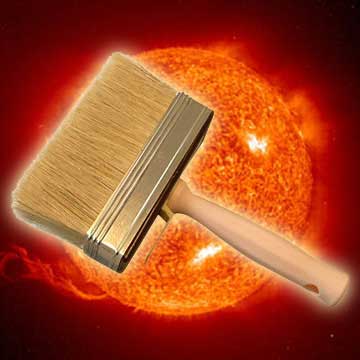
This idea gives a major advantage to a team of researchers at the Notre Dame University in order to do something transformative, “to move the research beyond the current silicon based solar technology” as Professor of Science in Chemistry and Biochemistry and investigator in Notre Dame’s Center for Nano Science and Technology (NDnano) Mr. John A. Zahm said.
As he added, “By incorporating power-producing nanoparticles, called quantum dots, into a spreadable compound, we’ve made a one-coat solar paint that can be applied to any conductive surface without special equipment.”
The team’s search for the new material was described in the journal ACS Nano and was centered on nano -sized particles of titanium dioxide, which were coated with either cadmium sulfide or cadmium selenide. The nanoparticles were then suspended in a water-alcohol mixture to create a solar paint paste.
When the solar paint paste was brushed onto a transparent conducting material and exposed to light, it created electricity. “The best light-to-energy conversion efficiency we’ve reached so far is 1 percent, which is well behind the usual 10 to 15 percent efficiency of commercial silicon solar cells,” explains Kamat.
“But this solar paint can be made cheaply and in large quantities. If we can improve the efficiency somewhat, we may be able to make a real difference in meeting energy needs in the future.” “That’s why we’ve christened the new paint, Sun-Believable,” he adds.
Kamat and his team also plan to study ways to improve the stability of the new material. NDnano is one of the leading nanotechnology centers in the world. Its mission is to study and manipulate the properties of materials and devices, as well as their interfaces with living systems, at the nano-scale. This research was funded by the Department of Energy’s Office of Basic Energy Sciences.



